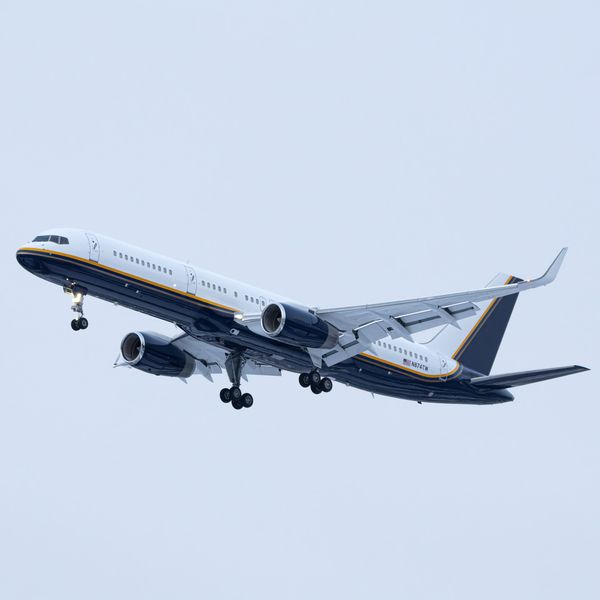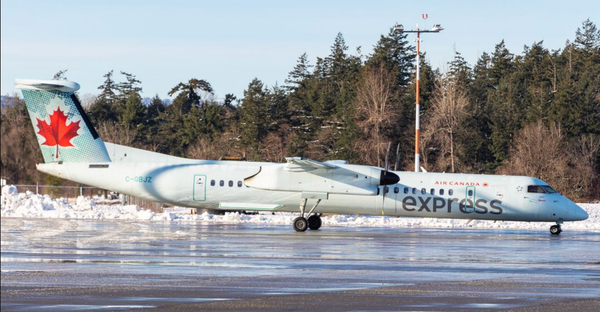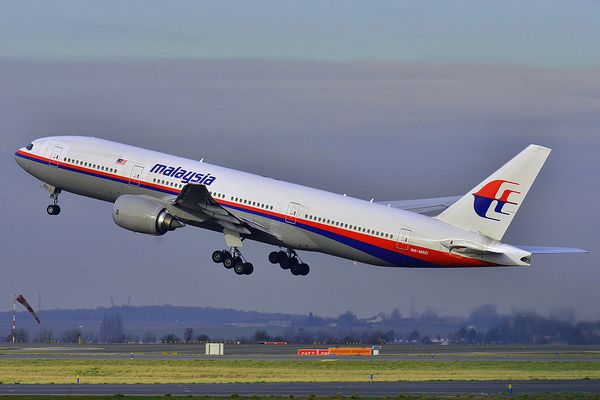On March 8, 2014, Malaysia Airlines Flight 370 (MH370) disappeared from radar. After spending over $200 million, only a few pieces of debris were found. Ten years later, the exact location and reason behind MH370's disappearance remain a mystery.

Flight and Disappearance
Malaysia Airlines Flight 370, with registration 9M-MRO and serial number 28420, was a scheduled overnight flight between Kuala Lumpur and Beijing-Capital. It departed Kuala Lumpur at 00:42 and was expected to arrive in Beijing at 06:30, with a scheduled flight time of five hours and 34 minutes. There were 239 people on board, consisting of two pilots (Captain Zaharie Ahmad Shah and First Officer Fariq Abdul Hamid), 10 cabin crew, and 227 passengers. All are presumed missing to this day.
Shortly, the flight was over the South China Sea between Malaysia and Vietnam. After the captain communicated "Good night. Malaysian three seven zero" with air traffic controllers, the aircraft disappeared from radar screens. When this happened, others tried contacting MH370 but were unsuccessful. However, the plane had satellite tracking data, allowing us to see its known flight path.
A few minutes after the captain's communication, the aircraft turned left and flew over the Strait of Malacca towards the Indian Ocean. At 08:19, a few hours after the flight was supposed to land in Beijing, the aircraft transmitted one last time with a log-on acknowledgment request.
Initial Searches
The initial search began on March 9, 2014. After Malaysian officials analyzed military radar recordings, they believed the Boeing 777 might have flown over the Andaman Sea. The search radius increased and extended towards the Strait of Malacca and along Malaysia's West coast. After failing to find any debris or traces of aviation fuel, the phase for the underwater search was announced on June 26, 2014.
The underwater search shifted to the Southern Indian Ocean near Broken Ridge. The search officially began on October 6, 2014, with the GO Phoenix vessel. The GO Phoenix helped with other successful underwater searches for aircraft black boxes. Successes include Air France Flight 447, which crashed in the Atlantic Ocean, and Yemenia Flight 626, which crashed on approach in Moroni, Comoros.
The vessel used its SLH ProSAS-60 towed aperture side scan sonar system to produce a high-resolution image of the ocean floor up to 6,000 meters. By April 16, 2015, nothing had been found in the priority search area. The search was withdrawn a month later due to dangerous sea conditions.
Debris/Findings
On July 29, 2015, debris from MH370 was found on the coast of Reunion Island in the Western Indian Ocean. The first item was the aircraft's right flaperon, which French officials confirmed as part of MH370 after extensive research. After the French police conducted searches near the island, they found a damaged suitcase, a Chinese water bottle, and an Indonesian cleaning product.
Beginning in the first half of 2016, possible MH370 debris was found on Reunion Island, Pemba Island in Tanzania, and the Malagasy Coast in Madagascar. These pieces of debris included possible parts from a Rolls Royce engine cowling and an outboard flap from the aircraft's wings. Relatives of the MH370 victims searched through more debris in Madagascar in November 2016. By October 2017, 20 more pieces of debris were recovered from beaches in the Western Indian Ocean.
By August 2018, five pieces of debris were recovered and handed over to Malaysian transport minister Anthony Loke. Despite the confirmed pieces of debris from MH370, officials have still not been able to narrow the search area. The initial search area covered 120,000 square kilometers (46,332 square miles) in the Indian Ocean. The ocean's size, depth, and strong currents, combined with limited technological advances, made searching for a single aircraft nearly impossible. The search for MH370 was suspended after finding nothing.
Disappearance Theories
The mystery surrounding MH370's disappearance stirred up many theories. While there is a wide variety of them, some full-on conspiracies, here are the top theories behind its disappearance. As a disclaimer, these are only theories; therefore, they are not pieces of evidence surrounding the flight's disappearance from ten years ago.
1) Potential Hijacking
After both the United States and Malaysia reviewed every passenger's background, three were briefly under suspicion for a potential hijacking of MH370. A 29-year-old passenger named Mohd Khairul Amri Selamat was an engineer for a Swiss jet charter company. However, this was quickly debunked as his role would not give him the proper knowledge to divert and fly a large jetliner.
Two other passengers were also suspected of boarding the flight with stolen passports from Austria and Italy. However, the two men were asylum seekers and entered Malaysia on February 28 with valid Iranian passports. Furthermore, the Secretary General of Interpol claimed they had no intentions to commit an act of terrorism.
2) Cargo and Onboard Fire
Some believe the mangosteens and lithium-ion batteries may have started a fire on board. While the lithium-ion batteries were packaged according to IATA guidelines, there were no further inspections at Kuala Lumpur Airport. If overheated and ignited, these batteries can cause intense fires. However, the fruit and battery mixing that caused the fire was dismissed, as the fruits and lithium-ion batteries were packaged and put in separate containers.
3) Unresponsive Crew and Hypoxia
With MH370 flying for five hours toward the Indian Ocean, theories regarding unresponsive crew members and hypoxia occurred. When analyzing the flaperon, it was noted that the landing flaps were not extended, implying the plane was not flown under control, supporting the high-speed spiral diving theory. In 2018, the Australian Transport Safety Bureau (ATSB) also asserted that the flight was not under control. Despite the evidence, there is no consensus amongst investigators regarding the unresponsive crew or hypoxia theory.
4) Pilot Mass Murder-Suicide
This is perhaps one of the most popular theories surrounding the disappearance of MH370. When Malaysian officials searched and seized the records of the 12 crewmembers, they issued a report in March 2015 claiming "there was no evidence of recent or imminent significant financial transactions carried out" by any of them. Additionally, there were "no significant behavioral changes" for the pilots.
However, U.S. officials believed that the captain or someone else reprogrammed the aircraft's autopilot to divert from its original flight path and out West toward the Indian Ocean. The New York Magazine obtained a confidential document from Malaysian police in 2016 and revealed that the captain programmed a similar flight path that MH370 took into his home flight simulator. The ATSB and the Malaysian government later confirmed these findings.
Many people claimed the captain depressurized the cabin before turning off the transponder. They argued that he was lonely, sad, and clinically depressed. Despite this theory sounding plausible, the opposing side claimed that there were holes in the pilot suicide argument. They claimed that flying a depressurized plane was biologically very difficult.
Additionally, an ATSB official claimed that the captain would have also suffered from decompression sickness by depressurizing the cabin, meaning he would have been unable to control the plane. Overall, there is simply too much speculation to come up with any meaningful conclusions regarding this theory.
Conspiracy Theories
Besides the more plausible theories above, some full-blown conspiracy theories surrounded MH370's disappearance. While this is not a comprehensive list, here are some highlights from over the years.
1) Shoot-Down
The late Conservative radio talk show host Rush Limbaugh speculated that MH370 was shot down. Supporters of this theory frequently cite other examples of civilian airplanes being shot down, such as Korean Air Flight 7 being shot down by the Soviet Union in 1983 or Malaysia Airlines Flight 17 by Russia in July 2014. However, this was debunked due to a lack of evidence and claims that Malaysian officials deemed it a friendly aircraft.
Another shoot-down theory was put forth by Marc Dugain, former head of Proteus Airlines (a French regional airline that ceased operations in 200). He asserted that the U.S. may have shot the plane down due to fears of a 9/11-style attack on its naval base in Diego Garcia. However, his claims were deemed to be wild.
2) Supernatural Theories
After CNN host Don Lemon suggested that it may not have been preposterous that a black hole consumed MH370, he received much criticism and backlash. U.S. DOT inspector General Mary Schaivo said that would be impossible since the entire universe would have been sucked in. Columbia professor David J. Helfand and Stanford professor Peter Michaelson elaborated why Lemon's suggestion was outlandish.
Other supernatural theories include a meteor striking the plane and aliens abducting the plane. The meteor strike, statistically speaking, is extremely low, therefore being dismissed. As for the alien abduction theory, it came from an individual receiving strange voicemails and texts with coordinates near Indonesia, close to where MH370 vanished. However, investigators tracked the phone calls to have taken place from hotels in Port Blair, dismissing them as possible prank phone calls.
3) Russian Special Ops Capture
An article in the New York Magazine hypothesized that someone could have broken into the electronics and equipment bay and started pulling apart the plane's electronics to fake satellite data that researchers used to pinpoint the flight's location. Instead of the known flight path before it went missing, Jeff Wise argued that it flew up North into Kazakhstan, where the aircraft remains hidden. This has been disproven with the debris that has washed ashore the various islands in South Africa.
4) Fake Flight Plan
An email sent to The Wire suggested a passenger hijacked the plane and concealed its location by faking a flight plan from an uncontrolled airport. The email further told the pilot could fly to a hidden airfield while pretending to be a small private jet. However, hiding a Boeing 777-200ER carrying 239 passengers and crew is extremely difficult.
5) Cockpit Fire
Perhaps one of the more plausible conspiracy theories, pilot Chris Goodfellow suggested a cockpit fire led the captain to turn West to attempt a landing. He backed up his claim by arguing that the pilots either had to focus on flying the plane over radioing a distress call or passed out due to smoke and flames. Unfortunately, while the theory sounds great, it lacks solid evidence.
Netflix Documentary
In 2023, Netflix released a 3-episode documentary called MH370: The Plane that Disappeared. It covers the pilot, hijack, and intercept theories. While other documentaries and news stories have covered the missing jetliner, this documentary received plenty of backlash. Rotten Tomatoes and IMDB gave ratings of 8.0 out of 10 and 6.1 out of 10, respectively. However, based on audience reviews, the series received a paltry 1.7 out of 5 stars.
Critics of the film argued that the series focused too much on conspiracy theories after the first episode. It attempted to stand out from other MH370-related documentaries but flopped due to said focus on conspiracies. Others further argued that the series was insulting and hurtful to the families and friends who are still living with the nightmare that their loved ones are missing and may never be found.
Niyata Pingali, who released a Google review, claimed the film "irresponsibly paint[ed] these family members as grieving individuals or conspiracy theorists" and said it was a horrific waste of Netflix's money. He also recommended that people watch Aircrash Investigations instead of Netflix.

Long-Term Impacts
Before MH370 disappeared, Malaysia Airlines struggled to cut costs to compete with low-cost carriers such as Air Asia X within Southeast Asia. Malaysia Airlines lost 4.1 billion Malaysian ringgit ($866 million) from 2011 to 2013. Unfortunately, MH370 and later MH17 in 2014 exacerbated the carrier's losses. The airline lost $97 million in just one quarter following the incident, which is a 75% increase compared to the second quarter of 2013.
After the two devastating tragedies, Malaysia Airlines retired its Boeing 777-200ER fleet. From 2014 to 2023, the airline became smaller by cutting its fleet size and variety. Also, it focused more on regional flights, as it cut most of its service to Europe (the only destination it flies to is London), all service to North America, and most service to Australia.
According to the Centre for Aviation, Malaysia Airlines reported profits for the first time after years of restructuring efforts. As for the missing jetliner, people continue looking for clues to discover what may have happened to it. There are discussions about resuming searches for the aircraft, especially after an Australian fisherman claimed he found the left wing of a Boeing 777 ten years ago near Australia. As more clues begin to surface, one thing still has not changed: Jetliners are still at risk of vanishing due to hold-ups in approving regulatory amendments.
LATAM Boeing 767 Immobilised in Atlanta After Catastrophic Eight-Tire Blowout » Avelo’s Fleet Downsizing, Base Closures, and Exit from ICE Charter Sector Signal a New Era of Efficiency » Why Aviation Careers Attract Students with Global Mindsets »
Comments (0)
Add Your Comment
SHARE
TAGS
INFORMATIONAL Malaysia Airlines MH 370 Investigation Mystery History Malaysia Death Conspiracy Theory Incident DisappearanceRECENTLY PUBLISHED
 This Week in Aviation: The 10 Stories That Mattered Most
From major airline developments to aircraft updates and industry shifts, this weekly recap highlights the ten most-read aviation stories from the week of January 04.
INFORMATIONAL
READ MORE »
This Week in Aviation: The 10 Stories That Mattered Most
From major airline developments to aircraft updates and industry shifts, this weekly recap highlights the ten most-read aviation stories from the week of January 04.
INFORMATIONAL
READ MORE »
 NTSB Scrutinizes FAA NOTAM Logic Following Fatal MD 530F Canyon Crash
One week after a private helicopter plummeted into the rugged depths of Telegraph Canyon, the aviation community is reeling not only from the loss of four lives but from the glaring systemic failures it has unearthed.
NEWS
READ MORE »
NTSB Scrutinizes FAA NOTAM Logic Following Fatal MD 530F Canyon Crash
One week after a private helicopter plummeted into the rugged depths of Telegraph Canyon, the aviation community is reeling not only from the loss of four lives but from the glaring systemic failures it has unearthed.
NEWS
READ MORE »
 Air Canada Doubles Down on Regional Strength with Major PAL Airlines Expansion
In a strategic move to fortify its presence in Eastern Canada, Air Canada has officially announced its intent to significantly expand and extend its commercial partnership with PAL Airlines. As of January 8, 2026, the two carriers have signed a Letter of Intent (LOI) that not only secures regional connectivity for the next decade but also introduces a substantial fleet expansion to meet rising demand in Québec and the Maritimes.
NEWS
READ MORE »
Air Canada Doubles Down on Regional Strength with Major PAL Airlines Expansion
In a strategic move to fortify its presence in Eastern Canada, Air Canada has officially announced its intent to significantly expand and extend its commercial partnership with PAL Airlines. As of January 8, 2026, the two carriers have signed a Letter of Intent (LOI) that not only secures regional connectivity for the next decade but also introduces a substantial fleet expansion to meet rising demand in Québec and the Maritimes.
NEWS
READ MORE »



